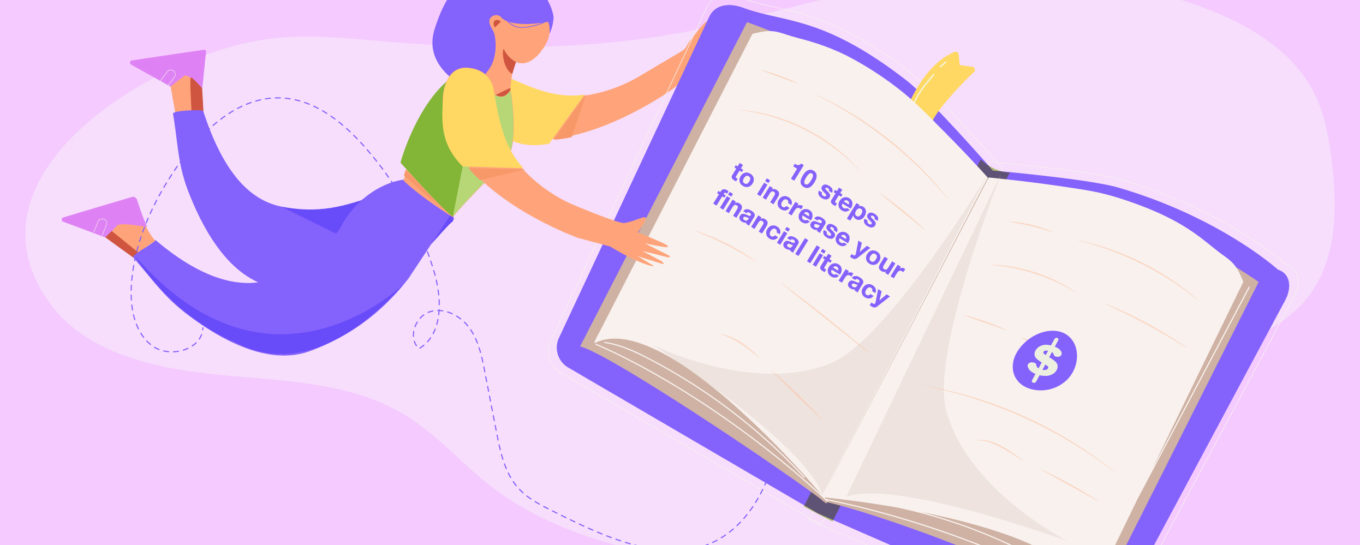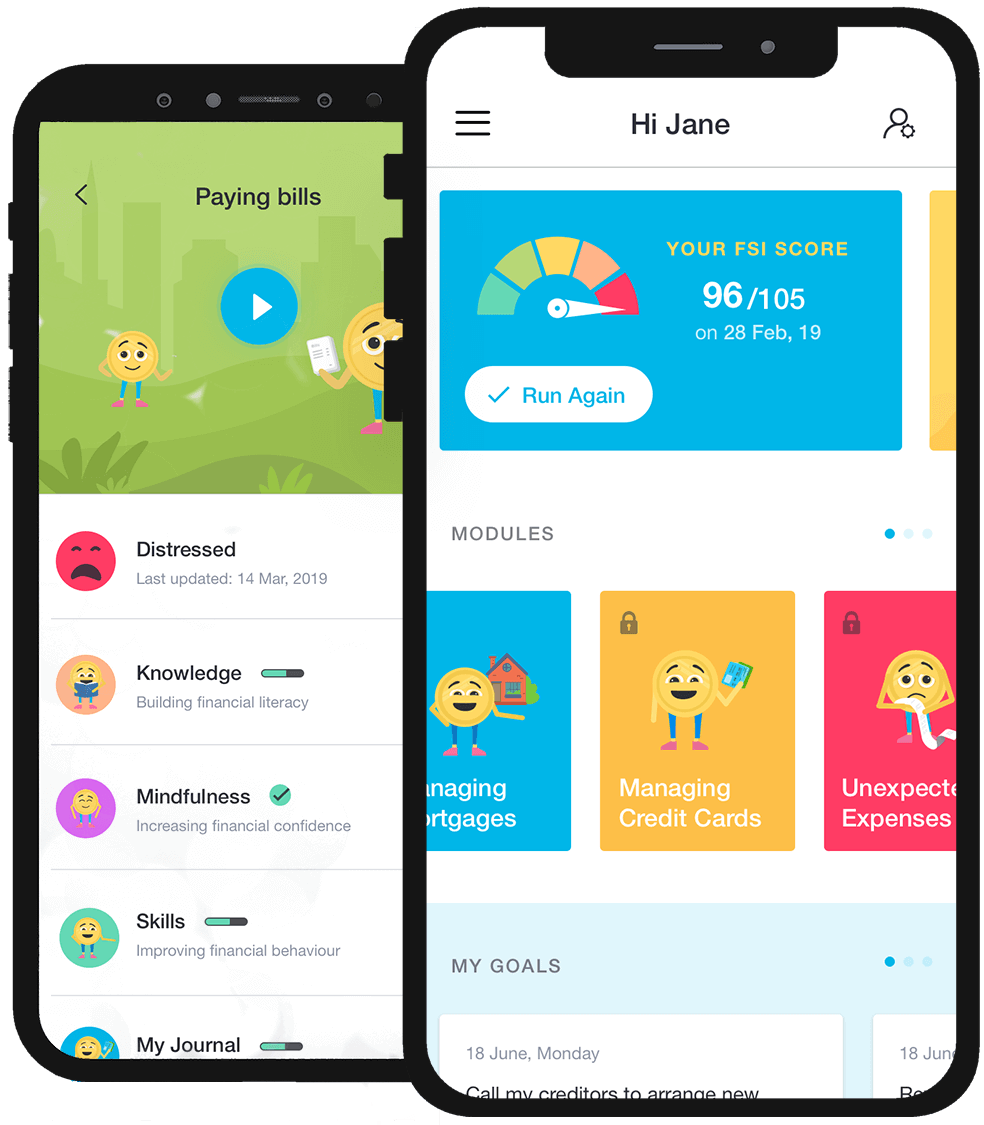[email-subscribers-form id=”2″]
Ten steps to increase your financial literacy
Ten steps to increase your financial literacy.
The feeling of fear and anxiety of not knowing your subject matter strikes most of us. When it comes to your finances, it is no different. Making financial decisions comes with consequences, both good and bad.
Being financially illiterate, however, increases your chance of making poor decisions. It can also mean missing opportunities that you might otherwise have taken advantage of. For others, not being financially literate may mean the difference between financial success or financial stress.
Generally, people with strong financial literacy are invested in understanding how their finances work, so typically, they will not have gaping holes in their knowledge.
They are very curious, very interested in their finances – how they work, why they work and understanding the levers to pull to make changes for the better.
They are already financially mindful.
If you know your level of financial literacy has been holding you back, you can take positive steps to become competent and confident but note it will take time.
Think of it as learning the language of money – then you can understand how you interact with your money and how you can use services and tools to get more out of it. We believe being financially literate is a life skill, and we are always learning.
You may know some things adequately but not others – for instance, you can budget well but have a poor understanding of tax.
To improve your financial literacy is a journey of discovery, learning and experiences to a point where you feel confident with your finances to make the next right decision. Knowledge is power. The lack of knowledge can leave us vulnerable in many areas of life.
Here are the ten steps to increase your financial literacy.
Step 1 – Willingness to learn
According to Investopedia, financial literacy is the ability to understand and effectively use various financial skills, including personal financial management, budgeting, and investing.
Financial literacy – or the lack of it – is without question the foundation of your relationship with money. Is it scary, daunting, or a challenge? You need to be willing. That means accepting you have blind spots or areas where you need to learn to understand.
Understand why you are at this point and get willing.
Step 2 – Get organised with your financial paperwork and track what you spend
This is a simple action that is incredibly useful.
However, and whenever you do it, keep your financial documents together in simple categories – paper and digital.
Track what you spend. This can be done through several means, these include:
- An app
- A spreadsheet
- A journal
Aim for weekly and just do it.
Step 3 – Learn money basics. Simple and compound interest, risk diversification, inflation, saving and investing money
Here is where your need to use that willingness to learn because learning new things can be daunting. You might be tempted to drift into thinking ‘ignorance is bliss’, but it’s equivalent to being mindless.
Start at the beginning, go slowly, use Google and look for credible sources. The first starting point we recommended using is www.moneysmart.gov.au.
Some money basics:
What are simple and compound interest and their differences?
What is inflation, and how does it impact our cost of living?
Saving money and simple ways to do it.
What is credit?
What are investments and the different types available?
What is risk diversification and the benefits?
Step 4 – Learn budgeting techniques and make it a regular event
There are many techniques and templates for budgeting, but you will not be able to make one without properly organising your paperwork and tracking your spending.
Budgeting involves a few simple steps, but the fundamentals are to accurately track your spending and income and estimate them for the future.
How much did I spend in the last three months, organise in clear categories – regular bills, examples include rent/mortgage payments, electricity/gas bills, phone, groceries, school fees, health insurance and car expenses.
Now list out your discretionary spending—for example, entertainment and eating out expenses.
Income. How much income did I receive? Examples include your take-home pay, income from savings or investments, any Government benefits.
The next steps are:
Compare the two totals – income and expenses. Do you have a surplus or deficit?
Identify where you can cut expenses and return to surplus or create savings if already in surplus. Be realistic, you will not sustain life without any luxuries at all, but it’s better if they are small and meaningful.
Put it into practice. Start living according to your budget. This is developing a new healthy habit.
Learn from what is happening. Adjust, ask for help, only make your budgeting more complex when you can master living to a basic budget.
Step 5 – Use available financial learning resources
Read credible financial books, websites, undertake a personal finances course and listen to leading financial commentators.
Here is where you begin feeding a growing hunger for learning about financial concepts. It is good to follow podcasts and commentators as they will likely shift through the gears to deal with different financial scenarios.
They may also leave you scratching your head. Consider a financial course at some point to understand the concepts that still baffle you.
Plenty of short courses are available online. If you are tempted to think of a course as a cost rather than an investment, hold that thought.
As Harvard psychologist Howard Gardner said, “If you think education is expensive, try estimating the cost of ignorance.”
Step 6 – Understand how credit scoring, basic taxes, and superannuation works
You are now undertaking a deep dive into some areas that may have baffled you – but again, think of knowledge as power.
Spend time researching each area:
What are credit scores? How do they work, and can you improve them?
Taxes – start with the tax you pay; look at your payslip. Ask the payroll department to explain it to you. The Australian Taxation Office (ATO) website has good information, but that can be daunting. If necessary, ring their helpline and ask them to explain terms and concepts you do not understand.
An excellent introduction to tax is to try and understand your tax return. Talk to your tax agent, if you use one, and make sure you understand your income tax return before you sign and lodge.
Superannuation – as it’s compulsory, you will have a superannuation account. Ask your super fund how its works for you and where your money is invested?
Step 7 – Set realistic financial goals on spending, saving and investing
Very much related to step 4, but importantly, you cannot do this without mastering step 4. You will develop goals on saving and spending once you understand how much you make and spend.
Whether it is saving for a house deposit, holiday, retirement fund or buying a car, it is vital to work out how much you can afford and how long it will take you.
Set that goal, ensure your budget is set up to achieve your goals providing you with enough cash surplus. Adjust your expectations if any unexpected expense arises.
Step 8 – Before entering into any financial product or investment, research and understand how it works first
Learn the general rules: what is a good short-term investment, what is a long-term investment. What do quick returns say about the nature of investment?
By now, you should be getting a clear picture. Finances are complex, but they become clearer and more manageable with research and knowledge.
As the saying goes, ‘if you do understand it, do not invest in it’.
Cryptocurrencies come to mind, do you understand it, or are you just getting involved because you heard it’s an easy way to make quick money.
Step 9 – Seek professional help where appropriate
There are thousands of financial products, systems, and legislative requirements to the financial system – employing over 800,000 people.
But the financial system weaves into every area of life: it is the lifeblood of the economy.
We all need help with our finances. Never be afraid to seek out professional help.
Step 10 – Learn from your mistakes and enjoy your successes
You have to be willing to learn, step 1 – even when you think you know a lot, and undoubtedly by the time you get to step 10, you will know much more than you did when you started.
Enjoying your successes is vital. Ultimately, how we treat our money is how we treat ourselves – we work hard for it, don’t squander it.
Understanding money builds capacity, provides more choices and buys experience, so it is crucial we enjoy the money in our life and not let it rule our life.
Good luck!









